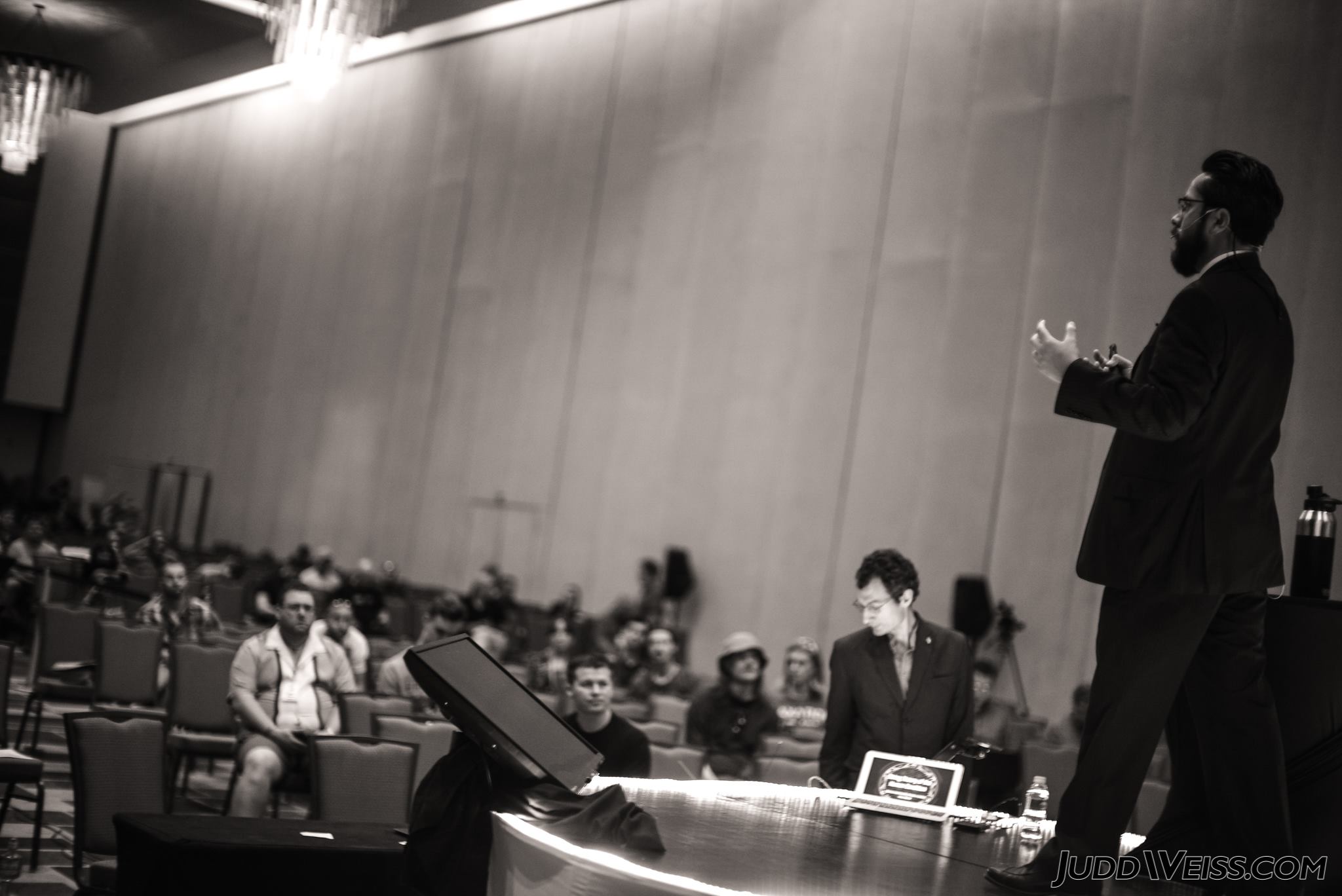
Giving a speech or presentation can be difficult and stressful, but with this small guide you will capture the attention of your audience and be able to give an entertaining and interesting presentation!
If you are following Luis Fernando Mises you can see him live at Anarchapulco just next month to see a master in action! In case you have not yet purchased your tickets you can use the discount code “emancipated” for a 10% discount.
Making an oral presentation that captures the public’s attention from beginning to end is a challenge, especially when it comes to complex or tedious issues. If you want your presentation to be a success, use these recommendations the next time you are in front of an audience.
Know your audience
Before making a speech, analyze who is addressed and tailor your presentation to fit the crowd. Investigate your interests and motivations and include them, taking into account the main message, as well as the points you need to emphasize. Remember that the more you identify the listener with your exposure, the greater your influence will be.
Consider yourself one more in the audience
When you write the speech that will later be verbalized, place yourself in the audience’s shoes and think what parts may be boring or incomprehensible. Once you identify them, try to explain them in an easy and entertaining way. Keep in mind that if you do not understand the message yourself, chances are that neither will your audience.
Luis Fernando Mises speaking at Anarchapulco in 2017
Rehearse
A striking presentation depends, fundamentally, on the effort you put into it. Repeating your speech again and again out loud is a good way to internalize it and reduce the risk of mistakes. In addition, practicing will help you to be confident before the public. Using a mirror to observe and improve your body language is also very good, or you can even record yourself on video and see your presentation in full.
Use slides
Many times the oral presentation requires explaining difficult to digest concepts. A slide show presentation makes it possible to better assimilate the information, as it is a support material for not only the receiver, but also for the issuer. You can summarize the core data of your speech in presentation programs such as PowerPoint or Prezi that you can find and download online.
There are many other alternatives out there and my personal favorite is OpenOffice.org’s free presentation program. You can download it for free on their website and if you have ever used PowerPoint you will feel right at home!
Put the 10-20-30 rule into practice
This rule, created by Guy Kawasaki, implies that if you use an electronic presentation to boost your exhibition, you should not have more than 10 slides, 20 minutes in length, or less than 30 point font size.
The below is an excerpt from guykawasaki.com, please visit Guy Kawaskis site for the full explanation and more great tips.
“Ten slides. Ten is the optimal number of slides in a PowerPoint presentation because a normal human being cannot comprehend more than ten concepts in a meeting
Twenty minutes. You should give your ten slides in twenty minutes. Sure, you have an hour time slot, but you’re using a Windows laptop, so it will take forty minutes to make it work with the projector. Even if setup goes perfectly, people will arrive late and have to leave early. In a perfect world, you give your pitch in twenty minutes, and you have forty minutes left for discussion.
Thirty-point font. The majority of the presentations that I see have text in a ten point font. As much text as possible is jammed into the slide, and then the presenter reads it. However, as soon as the audience figures out that you’re reading the text, it reads ahead of you because it can read faster than you can speak. The result is that you and the audience are out of synch.”
Start with a story
This tactic works as a hook to the rest of the presentation. It must be an entertaining story with which everyone present can identify. Capturing the interest from the beginning and introducing the main ideas in an entertaining way will help you control the presentation.
Maintain eye contact Looking directly into the eyes is the most effective way to persuade.
Those who listen to you should feel that the speech was made especially for them, contemplating their needs and interests. So take the time to make eye contact with each person who attended the event. Body language is also very important. Have open welcoming arms and only bring notes to your speech, do not read off a script.
Repeat the central message
It is important that at the end of your presentation, the main message remains clear and strong in the minds of the listeners. The verbalized words disappear in your articulation, therefore, to fix it, you will need to reiterate it at least three times during the exposition.
Luis Fernando Mises giving a webinar on entheogens and liberty
Interact with your audience
Including the audience is a good strategy to maintain their attention throughout the entire instance. You can use phrases like “That’s a good question”, “What do you think?”, “Excellent contribution”, to show that you are interested in their participation. Also, you will have a few extra seconds to organize your response. Doing a Q and A at the end of the session or even during the presentation is also an excellent way of engaging your audience.
Are you a presenter or speaker? I would love to hear your personal tips for making a killer presentation!
Email us HERE if you want Luis Fernando Mises speak at your event.




